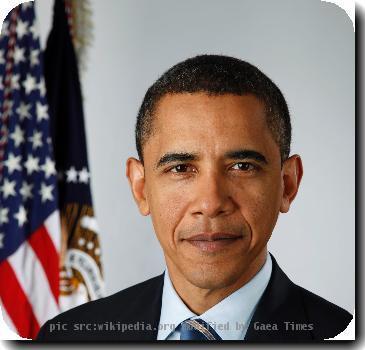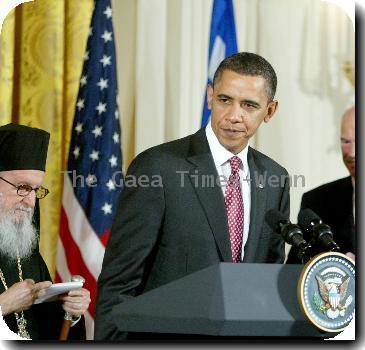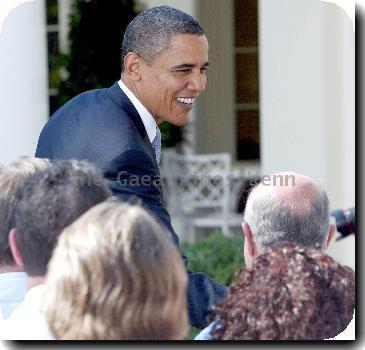Outdated, unwanted, possibly insecure, US nukes hang on in Europe as NATO debate builds
By Charles J. Hanley, APSaturday, May 8, 2010
Outdated, unwanted, US nukes hang on in Europe
KLEINE BROGEL AIR BASE, Belgium — Unseen beyond the grazing Holsteins and rolling pastures of eastern Belgium, the 12-foot-long tapered metal cylinders sit in their underground vaults, waiting for the doomsday call that never came. Each packs the power of many Hiroshimas.
America’s oldest nuclear weapons, unwanted, outdated, a legacy of the 20th century, are now the focus of a political struggle that could shake the NATO alliance in the 21st.
The questions hanging over the B-61 bombs, an estimated 200 of them on six air bases across Europe, relate not just to why they’re still here, but to how safe and secure they are.
For one thing, al-Qaida terrorists have already targeted this Belgian air base 84 kilometers (52 miles) northeast of Brussels. For another, U.S. Air Force inspectors found inadequate security at most of the six sites. And three months ago a “bombspotter” team, anti-nuclear activists, penetrated nearly one kilometer (a half-mile) inside Kleine Brogel, reaching its innermost bunkers.
“It was a shock,” Theo Kelchtermans, mayor of the neighboring town of Peer, said of the protesters’ infiltration, which went unchallenged for an hour. His bottom line: “I hope these bombs will disappear.”
It’s a hope shared by the governments of Belgium, Germany and the Netherlands, three of the five NATO countries, with Italy and Turkey, that host the Cold War leftovers.
Two decades after the Soviet Union’s collapse, even a former NATO secretary-general says the bombs’ time is past.
“The presence of tactical nuclear weapons in Europe, from a military point of view, no longer makes any sense,” Belgium’s Willy Claes told The Associated Press.
For others, however, the old bombs have an almost talismanic quality. Lt. Col. Roger Lams calls the short-range U.S. battlefield weapons, to be dropped by the jets of allies if the Cold War had ever turned hot, a “glue” holding trans-Atlantic comrades together.
“The bombs will not go,” he told a reporter visiting the air museum that the retired Belgian fighter pilot helped establish here at Kleine Brogel.
“It shares the burden,” Lams, 73, said of the joint nuclear mission he once trained for in his F-104 Starfighter. “They should not be withdrawn, and I don’t think they will be.”
The first official exchanges in this debate occurred last month at a NATO foreign ministers’ meeting in Tallinn, Estonia, and the debate will go on at least until a NATO summit in Lisbon in November, when the 61-year-old alliance issues its first “Strategic Concept” document since 1999.
In Tallinn, U.S. Secretary of State Hillary Rodham Clinton extolled NATO as a “nuclear alliance, sharing nuclear risks and responsibilities widely,” and said any reductions in the U.S. bombs in Europe must be linked to reciprocal cuts by the Russians in their tactical nuclear arms.
All told, at home and in Europe, the U.S. has an estimated 1,100 tactical nuclear weapons, and the Russians have at least 2,000, possibly many more.
Although the U.S. and Russia signed a treaty April 8 to reduce their intercontinental nuclear arms, Moscow sounds unready to deal on these shorter-range weapons.
In Brussels, Dmitry Rogozin, Russia’s blunt-spoken ambassador to NATO, laid out its position: While the U.S. still has nuclear weapons abroad, “we have already withdrawn all the tactical nuclear weapons of Russia back home,” from the territories of former East European allies and ex-Soviet republics.
“We are now expecting some steps on the U.S. side,” Rogozin told the AP — namely the voluntary pullback of the B-61s to U.S. soil.
Today’s American “hot potatoes,” as Rogozin dubbed them, date back to the 1950s and a U.S. effort to demonstrate a nuclear commitment to Western European defense by embedding such weapons near the potential battlefield. Some credit these binational “dual-key” missions with dissuading more Europeans from developing their own atomic arms in the old standoff with the Soviet bloc.
By 1971, the number of U.S. tactical “nukes” peaked at an estimated 7,300, on more than 100 bases around Europe — not just gravity bombs like the B-61, but also nuclear land mines, naval depth charges, artillery shells and short-range missiles.
Even before the fall of the Berlin Wall, this arsenal was being whittled down. By the turn of the century only the B-61s were left, bombs whose destructive yields can be fixed at various levels in a range from the equivalent of 300 tons of TNT up to 170,000 tons of TNT — 11 times the yield of the U.S. bomb that destroyed Hiroshima, Japan, in 1945.
In recent years some of those weapons, too, were withdrawn from seven NATO air bases, leaving only today’s six sites: Volkel Air Base in the Netherlands, Buechel in Germany, Ghedi Torre and Aviano in Italy, and Incirlik in Turkey, along with Kleine Brogel.
Here among the beet fields, poppies and tidy towns of eastern Flanders, the 136 members of the U.S. Air Force’s 701st Munitions Support Squadron tend to Kleine Brogel’s estimated 10 to 20 bombs, assigned to the F-16 fighters of the Belgians’ 31st Squadron, the “Tigers” whose nuclear mission dates to 1959.
Although NATO governments keep silent about some specifics, “nuclear sharing,” as it’s called, is an open secret, even discussed in a display at Lams’ air museum.
Much has changed, however, from the days when this old pilot stood on 30 minutes’ readiness alert with an ultimate weapon fixed to his Starfighter’s belly.
Today, a NATO brochure even wants it known that readiness is measured “in weeks and months, not minutes,” indicating that training updates, equipment upgrades or other classified factors would slow deployment. Lams’ old targets are also gone: Poland, East Germany and other potential Red Army “invasion routes” are now within NATO themselves.
“Relics of the Cold War” is how Foreign Minister Guido Westerwelle labeled the bombs as Germany’s new government took office last October.
In his Free Democrats’ coalition deal to govern with Chancellor Angela Merkel’s Christian Democrats, he stipulated that Germany push for the B-61s’ removal. “Germany must be free of nuclear weapons,” he said.
By early this year, he was joined by the foreign ministers of Belgium, the Netherlands, Norway and Luxembourg in calling for the nuclear discussion at Tallinn. Ex-NATO chief Claes and other former Belgian leaders published a statement favoring the weapons’ withdrawal. Most recently, some 200 members of five national parliaments wrote to U.S. President Barack Obama saying it is “the sincere wish of the majority of people in Europe” that the bombs be removed.
The German-led campaign has also generated a backlash.
Britain’s George Robertson, a former NATO secretary-general, said it was “irresponsible” for Germany to expect to remain under the nuclear umbrella of U.S.-based strategic weapons while refusing to have its Luftwaffe — the Tornados of Buechel Air Base’s 33rd Fighter-Bomber Wing — share the burden.
Meanwhile, the three former Soviet Baltic republics, all NATO members now, are said to have expressed concern in alliance councils about an unpredictable Russia next door without U.S. atomic weapons nearby.
But even NATO’s policy chief for weapons of mass destruction, American Guy Roberts, acknowledged he would be “hard put” to find a European mission for the leftover bombs. He referred to them as “a hedge, an insurance policy,” and as a “to-whom-it-may-concern deterrent,” with no specific military mission at the moment.
“They are political, not military,” the ex-Marine officer said in an interview at NATO headquarters, referring to the aura of “alliance resolve” the bombs represent.
As for Baltic nervousness, Ambassador Rogozin said “deterring” the new Russia in the vastly changed post-Cold War world is “senseless, idiotic.” To Rogozin, the American bombs are a “toy,” of use not to Europe or the U.S., but only to NATO’s bureaucracy.
In the end, whatever the strategic argument, an economic one may prevail.
The U.S. allies must all replace their aging warplanes in the coming years, and making the new jets nuclear-capable would incur huge additional costs. Germany, whose Tornados must be replaced earliest, will have to decide soon whether to spend an estimated 300 million euros (US $400 million) to extend this questionable nuclear operation. Berlin’s Bundestag is unlikely to vote those funds, NATO insiders said.
Other factors also weigh against long-term “nuclear sharing.”
For one, the U.S. military has been openly skeptical, seeing no clear future mission for nuclear sharing, but heavy costs, chiefly the hundreds of Air Force personnel assigned to munitions support squadrons. And at a time of growing global concern over “loose nukes” and catastrophic terrorism, security officials may look more closely at NATO’s nuclear bases. Terrorists already have.
At his 2003 Belgian trial, Tunisian al-Qaida operative Nizar Trabelsi confessed to planning to bomb Kleine Brogel Air Base. Although his target was the American airmen, not the nuclear bomb vaults, the plot showed that extremists have these bases in their sights.
In 2008, Air Force inspectors visiting the six nuclear bases found that “most sites require significant additional resources to meet (Defense Department) security requirements.” They cited problems with security systems, lighting and fencing, among other things.
Kleine Brogel’s security systems and 20 kilometers (12 miles) of perimeter fence, much of it barely a meter (a yard) high, were no obstacle to the half-dozen “bombspotters” who hiked in to the base’s sensitive core on Jan. 31.
Shiny new razor wire now tops one stretch of fence, but in a further action on April 1, anti-bomb protesters simply found easier crossing points. Almost 300 trespassers were arrested.
“It’s not just a question of why they should be removed, but of why they should even exist,” one of those arrested, Toon van Opterdijk, 22, of nearby Hechtel, said of the bombs.
“What we need is a big debate,” ex-NATO head Claes concluded. From Europe’s foreign ministries to the gates of NATO installations, the debate is well under way.
Tags: 300, Barack Obama, Belgium, Brussels, Eastern Europe, Estonia, Europe, Germany, International Agreements, Kleine Brogel Air Base, Municipal Governments, Netherlands, North America, Nuclear Weapons, Russia, Tallinn, Terrorism, United States, Weapons Of Mass Destruction, Western Europe





